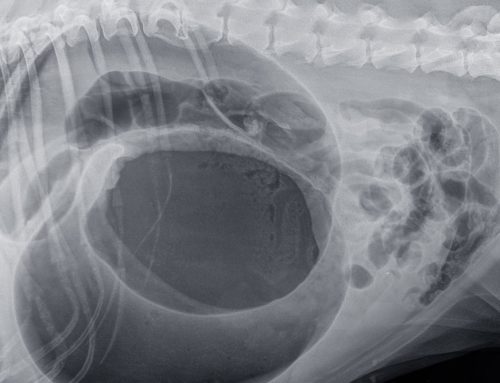Texas is ranked among the top 10 states for heartworm disease prevalence. The hot, humid weather is a playground for mosquitoes, allowing the pests to transmit the disease to vulnerable pets. Our Star of Texas Veterinary Hospital team knows how devastating heartworm disease can be, and we explain reasons why your pet should receive year-round heartworm prevention.
#1: Heartworm disease is easily transmitted to pets
Domestic dogs and wild canids, such as wolves, foxes, coyotes, and raccoons, are natural hosts for heartworms, and they provide an ever-present infection source. When a pesky mosquito feeds from an infected canid, they ingest young heartworm larvae, and the parasites mature inside the insect’s body. After a few weeks, they can be transferred to your pet when the mosquito takes its next meal. The parasites are deposited in the saliva when the mosquito bites your pet, and they swim through the bite wound to infect your pet.
#2: Heartworm disease can be deadly for pets
Once your pet is infected, the young heartworms migrate to your pet’s lung vessels. Dogs and cats are affected differently:
- Dogs — Since dogs are natural hosts for heartworms, the parasites can complete their full life cycle, including mating and producing offspring, while infecting the dog. Adult worms can be as long as 14 inches, and numerous worms can infect a single dog. The dog’s immune system recognizes the parasites as foreign and causes inflammation in the vessels supplying the lung tissue. Over time, this results in thickening and fibrosis in the vessels, inhibiting the heart’s ability to effectively pump blood throughout the body. As the dog’s condition progresses, congestive heart failure (CHF) develops. In addition, if too many worms are in the lung vasculature, they can back up into the right heart chambers and block blood flow. This condition, called caval syndrome, is deadly if the worms aren’t promptly surgically removed.
- Cats — Cats are atypical hosts, and heartworms don’t usually grow to adulthood. However, the young parasites can lead to significant health complications for the affected cat. When the heartworm larvae reach the lung vasculature, the cat’s immune response is profound, leading to a lung disease called heartworm associated respiratory disease (HARD). When worms do grow to adulthood, the cat’s small heart means that only one worm can cause significatn blood flow blockage.

#3: Heartworm disease often goes unnoticed in pets
In the early stages, pets affected by heartworm disease typically don’t exhibit signs. In many cases, the disease is advanced before signs appear, and the first sign some pets show is sudden death. Signs that may indicate your pet has heartworm disease include:
- For dogs — Lethargy, decreased interest in exercise, soft cough, decreased appetite, and weight loss. As CHF progresses, fluid can accumulate in the abdomen, causing the dog’s belly to swell. In cases where the worms block blood flow through the heart, signs include sudden onset of labored breathing, pale or muddy colored gums, and coffee-colored urine.
- For cats — HARD signs mimic those seen in feline asthma, including coughing, wheezing, increased respiratory effort, and vomiting.
#4: Heartworm disease can be difficult to diagnose in pets
Several diagnostic testing methods, including testing for young heartworms (i.e., microfilariae), antigen testing for adult female heartworms, and testing the pets’ immune response, are available to detect heartworms. However, some factors can cause false negative results. Examples include:
- If no adult female worms are present, microfilariae won’t be present, and the antigen test that detects adult female heartworms will be negative.
- A cat’s immune system responds so strongly to heartworms that they clear circulating microfilariae quickly.
- Pets tested early in infection will be false negative. Most pets don’t have circulating microfilariae or female antigens until seven months after infection, and antibodies against the parasites are not present until two months after infection.
- Some heartworm medications kill circulating microfilariae but not adult heartworms. If a pet is not properly tested or misses a heartworm medication dose, infection can be established with no circulating microfilariae.
Current recommendations for testing dogs for heartworms involve antigen testing and testing for circulating microfilariae. For cats, antigen and antibody testing typically are performed. In some cases, X-rays and ultrasound are needed to confirm diagnosis and determine the disease’s severity.
#5: Heartworm disease can be difficult to treat in pets
Heartworm disease can be tricky to treat because if the worms are killed too quickly, serious complications can occur. Factors to consider include:
- Physical exertion — Physical exertion increases the damage caused by the parasites to your pet’s heart and lungs, and their activity must be significantly restricted.
- Stabilization — Your pet’s condition must be stabilized before treatment to address the parasites is started.
- Medication — Treatment for heartworm disease in dogs involves administering medications to kill the parasites at every life stage. This process takes several months, and severe complications, such as pulmonary blood clots, can occur.
- Cats — No approved medication for cats is available, and treatment focuses on supportive care.
#6: Heartworm prevention for pets is easy and convenient
Several heartworm prevention options are available, so providing preventives is easy and convenient and much cheaper than treating a heartworm infection.
Provide year-round heartworm prevention to protect your pet’s heart and lungs from these dangerous parasites. Contact our Fear Free team at Star of Texas Veterinary Hospital so we can screen your pet and determine the best heartworm prevention for them.






